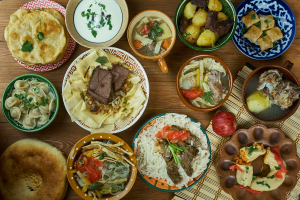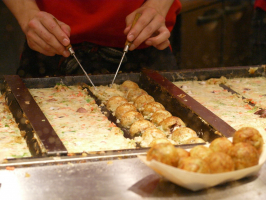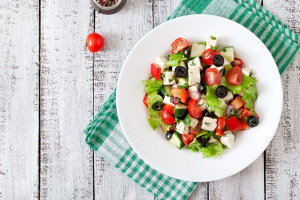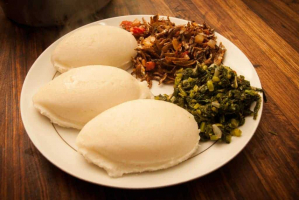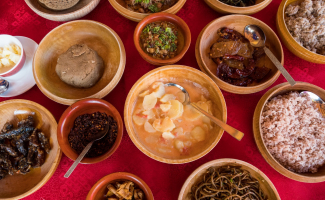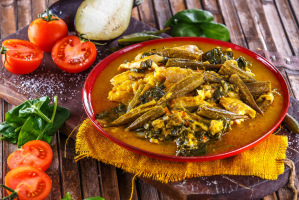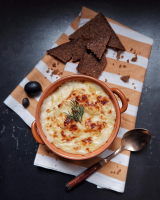Top 7 Best Denish Foods
Danish cuisine is centered on items that are caught, collected, or cultivated in the countryside, and it is influenced by the natural, climatic circumstances ... read more...that exist there. The Vikings ate fish, chicken, pigs, cows, horses, and goats that they raised themselves. They also ate wheat, cabbage, wild berries, and fruit from trees adapted to the Danish climate. Today, the new Nordic cuisine is inspired by the same components. Now, Toplist will show you some great Denish dishes.
-
The Danish open-faced sandwiches, Smørrebrød, are possibly the most well-known Danish culinary classic. Smørrebrød is simply a slice of rye bread topped with various toppings such as pickled herring, roast beef, and eggs topped with mayo and shrimps. This heaping rye bread delights date back to the nineteenth century, but the convenient lunch item has received a makeover in recent years and is now hipper than ever.
Ingredients:
4 servings- 4 pieces rye bread
- 4-5 tarragon stems
- 1 tbsp salted capers
- 1.5 cup mayonnaise
- 1 teaspoon apple vinegar
- 4-8 ripe tomatoes
- 1 shallot
- 3 Egg Yolks
- 1 tbsp Dijon Mustard
- 2 tbsp apple vinegar
- 6 dl vegetable or corn oil
- 1 teaspoon Sea Salt, freshly ground pepper
- 1-2 tbsp cold water
1) Mayonnaise- Put the egg yolks in a large bowl and add mustard, a little sea salt, pepper and 1 tablespoon of vinegar.
- Mix it well, preferably with a balloon whisk.
- Stir the egg yolks a little bit at the time. Slowly pour the oil so that the oil constantly gets mixed with the egg yolks. From time to time, pause adding the oil and stir the mayonnaise well.
- Continue the process until the oil is fully added, then add a little bit of water. Stir well – this will secure the mayonnaise to be firm and even.
- Season with salt and vinegar. Straight after, place the mayonnaise in the fridge where it can last for 4-5 days.
3) Final presentation: butter the bread with some of the mayonnaise and place the tomatoes on top. Place small dots of mayonnaise in between the tomatoes. Finally, place some tarragon leaves and rings of shallots on top of the smørrebrød.
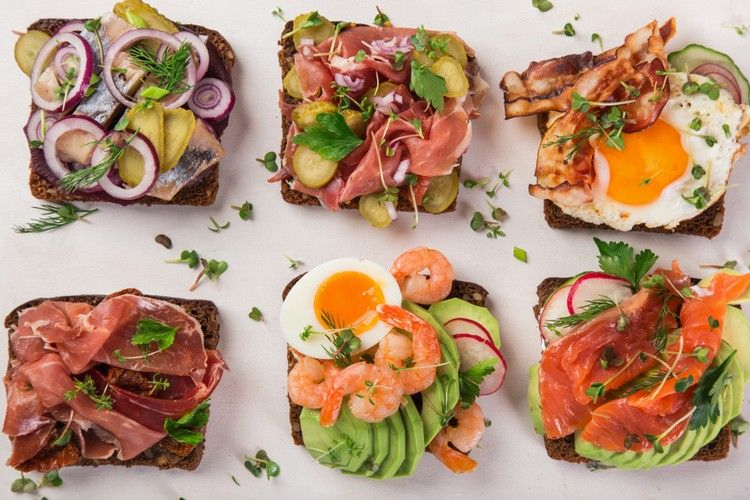
https://www.visitdenmark.com/ 
https://www.visitdenmark.com/ -
A stjerneskud is a sliced French bread sandwich filled with fried fish fillets with caviar, prawns, asparagus, lemon, and thousand island dressing. Enjoy it in traditional Danish fashion with a cold beer and schnapps at the finish. Ida Davidsen, a famous Danish chef who operates a smørrebrøds restaurant in the heart of Copenhagen, devised the shooting star. When cosmonaut Yuri Gagarin visited the capital in 1962, she was inspired to create the stjerneskud.
Ida Davidsen was besieged by media as she presented Gagarin with the rocket-shaped dish, and suddenly everyone had heard of stjerneskud. Since then, it has remained quite popular among Danes and is commonly offered as a lunch dish in numerous places.
Ingredients:4 servings- 1/2 cup crème fraiche
- 2 tbsp mayonnaise
- 2 tbsp tomato puree
- 2 tsp fresh lemon juice
- 1/2 tsp sweet paprikadash of cayenne pepper
- to taste sea salt & fresh pepper
- 8 plaice fillets
- 1/4 cup White Wine, 1/4 cup Water
- 1 egg
- 3/4 cup bread crumbs
- 6 tbsp Vegetable Oil
- 3 tbsp Buttersea salt & fresh pepper
- 6 green asparagus
- 4 ounces small shrimp
- 3 ounces bleak roe (Kalix löjrom)
- 1 lemon fresh dill
- 12 thin slices of cucumber
- Lettuce
For the dressing:- Whisk together the crème fraîche, mayonnaise, and tomato puree. Add remaining ingredients and whisk until thoroughly blended. Set aside.
- Preheat the oven to 350°F.
- Pat four of the fish fillets dry with paper towels. Season the fish fillets with salt and pepper, roll each fillet into a coil, and fasten with a toothpick. Place the fillets in a small oven-proof dish or sauté pan.
- Pour the white wine and water over them. Place in the oven and steam the fish fillets for about 10 to 15 minutes.
- Combine bread crumbs, 1/2 teaspoon salt, and pepper to taste in a shallow bowl or pie plate. Pat the remaining 4 fish fillets dry with a paper towel. Season each fillet with salt and pepper. One at a time, dip fillets first in beaten egg and then in bread crumb mixture, pressing down to adhere coating. Set aside.
- Heat 3 tablespoons oil and 1½ tablespoon butter in a 12-inch skillet over medium-high heat. When the butter stops foaming, place 2 fillets in skillet and cook until browned and crisp, about 3 minutes. Flip and cook on the second side until the thickest part of the fillet easily separates into flakes when pierced with a paring knife, about 2 minutes. Transfer fillets to a heated platter. Wipeout the skillet and repeat with remaining oil, butter, and fish.
- Heat ½ tablespoon each of olive oil and butter in a 10-inch skillet over medium heat. When the butter has melted, add half of the asparagus to the skillet with tips pointed in one direction; add remaining spears with tips pointed in opposite direction. Using tongs distribute spears in an even layer. Cover and cook until asparagus is bright green and still crisp, about 3 minutes.
- Uncover and increase heat to medium-high; season asparagus with salt and pepper. Cook until spears are tender and well browned along one side, about 3 minutes, using tongs to occasionally move spears from the center of pan to edge of pan to ensure all are browned.
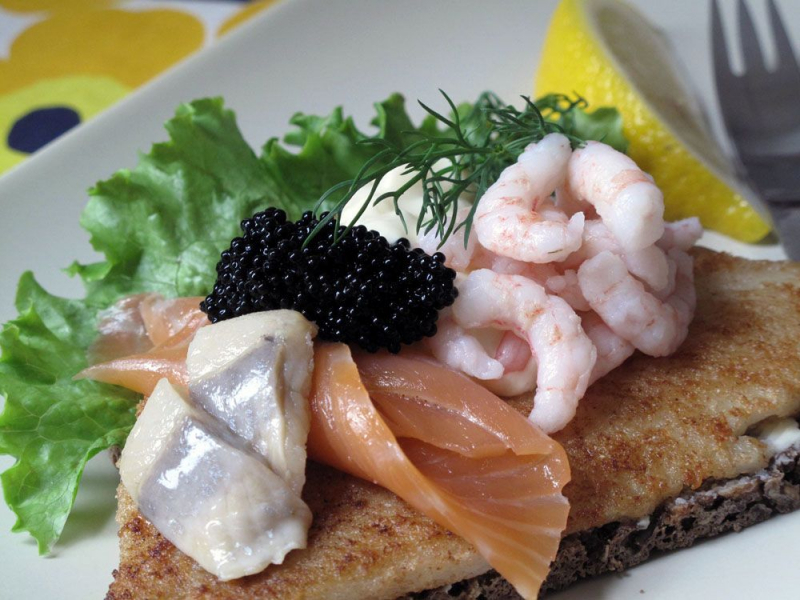
https://www.pinterest.com/ 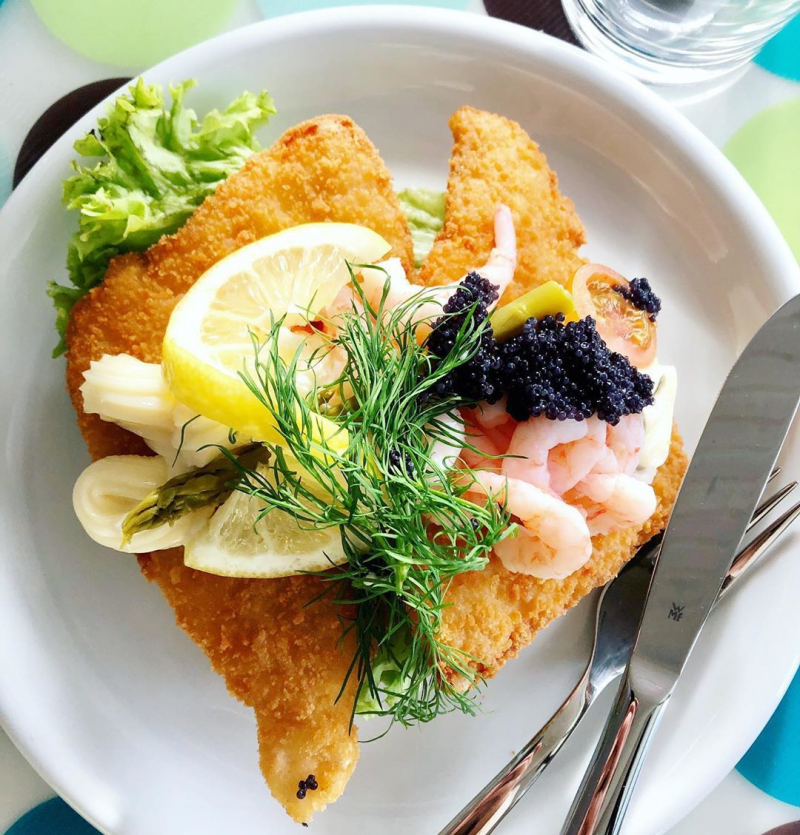
https://www.pinterest.com/ -
Pariserbøf, a lunch meal has been popular since the 1960s. While the dish's name may allude to France, it was created in Denmark, with the inclusion of pickled capers as a nod to the country of origin. Beef Parisienne is a fried open sandwich made with minced beef that has been seasoned with salt and pepper and fried in butter. The beef is served medium rare or well done on butter-fried French toast and garnished with chopped pickled beets, pickled capers, and thinly sliced red onions. Of course, a pasteurized raw egg yolk is required.
Ingredients:
2 servings- 2 slices sourdough bread
- 1/2 red onion
- 3 tbsp capers
- 4 tbsp Pickled Beetroot
- 4 tsp freshly grated horseradish
- 2 tbsp danish pickles or Piccalilli
- Egg Yolks
- Butter
- 200 g lean ground beef
- 1 tsp Dijon Mustard
- 1 tsp capers
- 1 egg
- Salt & pepper
Instruction:- Dice the pickled beets, grate the horseradish, drain the capers, slice and chop the onions and separate the yolk from the egg white.
- Mix the ingredients for the patties, and form 4, not too thick, patties slightly larger than the bread slices. Put the patty on top of the bread, make sure the patty will stay on the bread. Season with salt and pepper. The extra patties can be fried and saved for lunch the next day.
- Add a good amount of butter to a skillet and fry the pariserbøf patty-side down first until golden brown. Turn to fry the bread side until crisp. Pariserbøf is served medium to well done. If you use pasteurized eggs or no eggs, the pariserbøf can be served medium-rare.
- Serve right away with all the toppings.
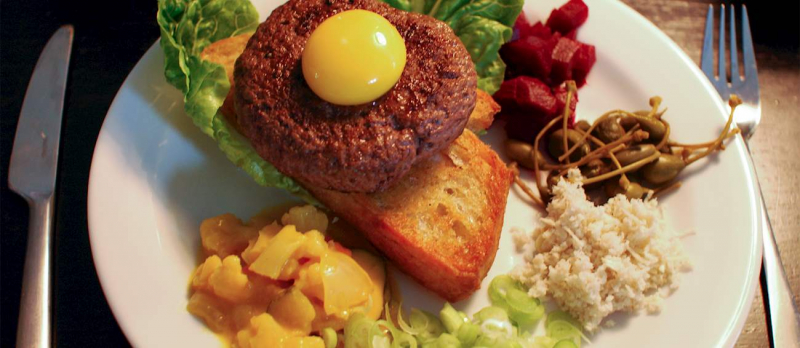
https://www.tasteatlas.com/pariserbf -
Frikadeller are popular Danish meatballs made primarily of ground pork with the addition of ground veal on occasion. For more than 200 years, Denmark has prepared and enjoyed these little meatballs. They are popular all year in all sections of the country. The original frikadeller is normally served with boiled potatoes and traditional Danish brown sauce on the side, and it's a hearty weekend dinner. Frikadeller can be eaten with pickled vegetables, mustard, rye bread, and a variety of other veggies.
Ingredients:
4 servings- 500 g minced pork
- Salt & pepper
- 1 egg
- 1 Onion
- 10 g wheat flour
- 100 ml Milk
- 25 g Butter
- 300 ml strong broth
- 2 tsp cornstarch
- 1 kg potatoes
- pickled cucumbers
Instruction:- Boil the potatoes.
- Stir the meat with salt.
- Add pepper, eggs, and grated onion.
- Add the flour. Then stir in the milk.
- Heat the butter in a pan over good heat until golden.
- Shape the mince into approx. 14 meatballs with a tablespoon.
- Brown the meatballs approx. 2 minutes on each side, approx. 4 minutes in total.
- Turn down to medium heat.
- Turn – and fry the meatballs for approx. 4 minutes on each side, approx. 8 minutes in total, until cooked through.
- Bring the broth to a boil.
- Stir cornstarch into cold water.
- Pour in the mixture while stirring and let the sauce boil for a few minutes.
- Season with salt and pepper.
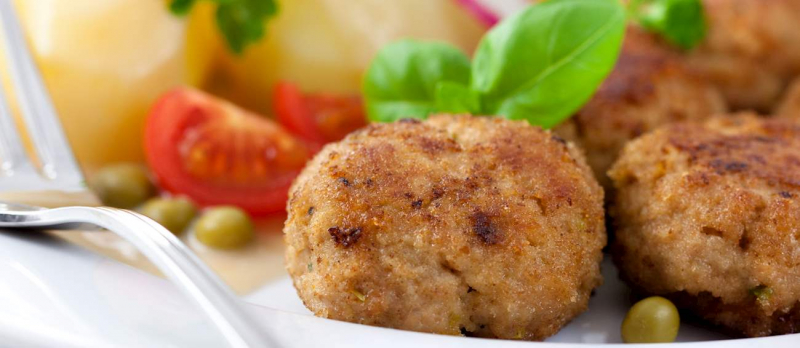
https://www.tasteatlas.com/frikadeller -
Danish pastry, a crunchy sweet delight, is the essence of a nice Sunday brunch in Denmark. It's prepared from the laminated dough, which is smeared in butter and rolled over itself several times. The end result is something resembling puff pastry. The dough is formed into various shapes and stuffed with tasty, creamy contents. Traditional fruit fillings such as apple and raspberry, vanilla custard, and almond paste are popular in Denmark, however, the fillings are usually region-specific because of their popularity.
Ingredients:
10 servings
For the dough:- 1 ¾ cup flour
- 1/2 cup milk
- 1/2 cup sugar
- 1 egg
- 6 tbsp butter
- 1/2 tbsp yeast
- 14 tbsp butter, ice-cold
- 1/4 cup of almond paste
- 1/4 cup of sugar
- 2 tbsp butter, softened
- 1 tsp vanilla extract
- 1 egg
- 1 tbsp milk
- sugar, for sprinkling
Instruction:- Place sugar, butter, egg, and milk in a large mixing bowl. Mix only to incorporate, then add ¾ of the flour and yeast, and mix for two minutes until you have a dough.
- Place the remaining flour on a working surface, then place the dough on the flour and knead for 3-4 minutes until you've worked in all of the flour into the dough.
- Put the dough in an oiled bowl, cover the bowl with cling film and store in a warm place for 45-60 minutes until doubled in size.
- On a lightly floured surface, roll out the dough into a rectangle which should be two times longer than it is wide, somewhat like a wide band.
- Shred the ice-cold butter directly on one half of the dough. Fold the other half of the dough over the one with butter, and pinch the edges together.
- Press down on the dough a bit, sprinkle it with flour, and then gently roll it. You want it to be twice as long as it is wide.
- Fold the dough three times as follows — fold one-third of the dough, so it covers the middle part of the dough, then fold a third of the dough from the other side over the two layers of dough. Roll out into a rectangle, and repeat the folding and rolling two more times. Optionally, for better results, you may leave the dough to rest and cool down in between. Take care that when you fold the dough the last time you end up with a wide, long strip of dough.
- Make cuts at a 45° angle along each side of the dough, so you end up with 1.5-2 cm wide slanting strips of dough. Make sure not to cut the center part of the dough because that is where the remonce filling will go.
- Mix the ingredients for the remonce filling in a small bowl, then spread it on the center part of the dough, taking care that both ends of the dough strip are uncovered. Start braiding the dough. Fold the ends and the sides one over the other.
- Place the braid on a buttered and floured baking tray. Cover the tray and refrigerate it for 30 minutes.
- Meanwhile, set the oven to preheat to 200°C. Brush the braid with an egg wash (1 egg+1 tbsp of milk), then sprinkle it generously with sugar. Bake in the oven for 25-30 minutes.

https://www.tasteatlas.com/danish-pastry/ 
https://www.tasteatlas.com/danish-pastry/ -
Stegt flsk med persillesovs has been named Denmark's number one national dish multiple times, dating back to 1890. The recipe comprises 1 cm thick slices of pork breast, the crispiest component with the nicest texture when seasoned with salt and fried—or baked if you choose a healthier option.
Boiled potatoes and parsley sauce, a milk-based sauce created with the meat juices, a little sugar, lemon juice or zest, and lots of finely chopped parsley, are served alongside the meat. The greatest sauce is made by thickening the sauce with flour (avoiding lumps). Many Danes like to serve it with pickled beets.
Ingredients:
4 servings- 1 kg pork belly
- 1/2 lemon
- 1 tsp sea salt flakes
- 800 g baby new potatoes
- 25 g Butter
- 3 tbsp Flour
- 1 cup Milk
- 1/2 cup bunch flat-leaf parsley leaves
- 1/4 cup Cream
- freshly grated nutmeg
Instruction:- For a very crispy crackling: at least 8 hours before cooking (ideally the night before), dry the pork rind well with paper towels. Score the rind with a sharp knife at 5mm intervals (stop before you get to meat). Sprinkle with 1 tsp sea salt and place uncovered in the fridge. After 2 hours, wipe off any liquid the salt has drawn to the surface. Replace with a fresh sprinkling of salt and return to the fridge. Repeat 1-2 more times. Remove from the fridge 1 hour before cooking to bring the pork up to room temperature.
- Preheat the oven to 240°C. Prepare an oven tray, either with baking paper or a rack. Put the tray/rack in the middle of the oven. Run a knife along the score lines in the rind. Dry the rind with paper towels, then rub the rind with the halved lemon and season with the sea salt.
- Place the pork, rind-side up, on the rack and roast, uncovered, until the rind is blistered (about 25 minutes). Reduce the oven to 160°C and continue to roast for 1½ hours until the meat is very tender. Remove from the oven and rest for at least 10 minutes before slicing into 8 thin pieces.
- Towards the end of the cooking, place the potatoes in a pot, cover them with cold, salted water, and bring them to a boil. Cook for 20 minutes or until tender.
- To make the parsley sauce, melt the butter in a pot over medium heat. Whisk in the flour and cook for 1 minute. Gradually whisk in the milk then simmer, stirring continuously, for 3-4 minutes or until the sauce has thickened. Add the parsley, cream, and nutmeg and season to taste with salt and pepper.
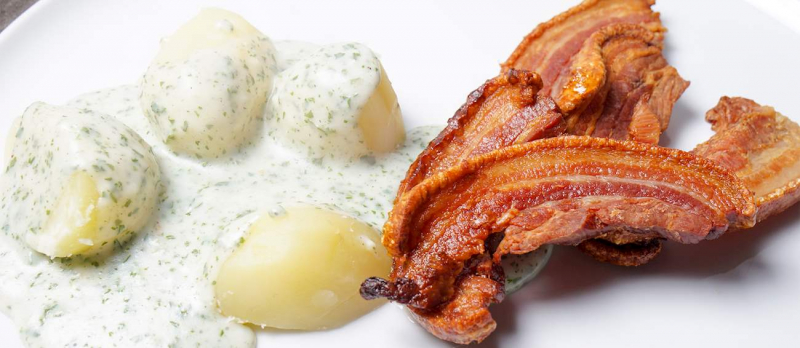
https://www.tasteatlas.com/stegt-flsk -
Æbleflæsk - Apple pork is a Danish delicacy that originated as a low-cost winter dish. It's made with fried or roasted pork belly and a tasty mix of sautéed apples and onions. It is often served over rye bread and comes in a variety of flavors throughout the country. It is usually connected with Christmas.
This traditional Danish meal is best made in the pan that you cooked your bacon in — simply add sliced apples and cook in the bacon oil until softened, along with a little chopped onion. Once cooked, mash it up, season it with salt and pepper, and serve with your favorite bread... usually rye. This makes a filling and delicious quick lunch!
Ingredients:
8 servings- 4 tbsp unsalted butter
- 1 lb bacon Salt & pepper
- 2 large yellow onion
- 1 tbsp chopped thyme leaves
- 2 1/2 lb sweet baking apples
Instruction:- In a 12-inch nonstick skillet, melt the butter over medium-high heat and season the bacon with salt and pepper. Add half the bacon slices to the skillet and cook, turning once, until caramelized on both sides and tender, 8 minutes. Transfer the bacon to a plate and repeat with the remaining 4 slices of bacon.
- Heat the oven to 400°. Drain off all but 1⁄4 cup of the rendered fat and return the skillet to medium heat. Add the onions and cook, stirring occasionally, until caramelized and soft, about 20 minutes. Stir in the thyme, remove the skillet from the heat, and scrape the onions into a 9-by-13-inch baking dish or small roasting pan.
- Add the apples to the onions, toss to coat evenly in the fat, and bake, stirring once halfway through, until the apples are just tender and lightly caramelized for about 20 minutes. Using tongs, push the apples and onions to one side of the baking dish and nestle the bacon slices next to them. Continue baking until the apples are very tender and the bacon is warmed through, about 10 more minutes. Transfer the dish to a rack and let cool for 10 minutes before serving.
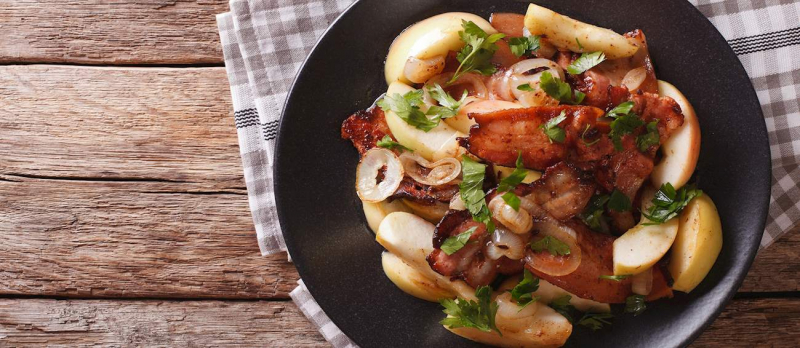
https://www.tasteatlas.com/bleflsk 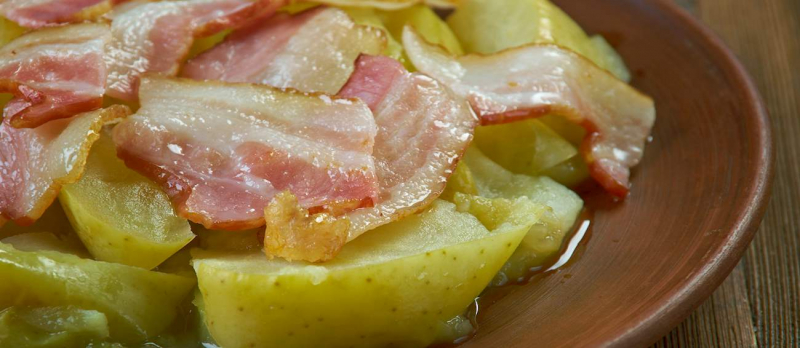
https://www.tasteatlas.com/bleflsk




